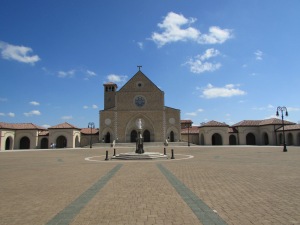My first memory of the photographs of William Christenberry (1936-2016) is in 1973 in an exhibit at the art gallery in Garland Hall on the University of Alabama campus. I was on campus for freshman orientation and had a couple of free hours one afternoon. It is my first awareness of putting Christenberry’s name with images that seemed immediately familiar somehow.
I have written about Christenberry in the past. He photographed the forgotten byways and captured a disappearing South; his disappearing South has nothing to do with nostalgia or the myths of any “lost cause.” He was drawn to the kudzu-covered landscapes and decaying buildings of primarily rural areas, mostly in Hale County, Alabama, where his “people” came from.
Christenberry’s photographs of places rarely have people in them, so his best-known work has escaped the racial politics which sometimes taints contemporary perceptions of 20th Century Southern photography. (He did have a somewhat obsessive installation called “The Klan Room” on his property, behind locked doors; rarely seen – except in photographs in books – it included objects that the artist collected and created to express his fascination and revulsion with that racist terrorist group.)
As I have begun to wander out a bit more recently, I find myself taking back roads and being attracted to the kinds of places that Christenberry exalted and taught me to better appreciate. These are not sad places. Instead, there is a pride that comes through the decay and a sense-memory inspired by them.
A couple of weeks ago, traveling to Harrison Fruit Farms in Chilton County for my first “peach run” of the season, I became acutely aware of places on the side of the road that I have probably passed hundreds of times over the years. A group of abandoned buildings in Thorsby, Alabama, called out to be photographed. Especially appealing are the ruins of the once stately Bank of Thorsby building, dated 1909. It is in the remaining details – the cornices, the lettering in the windows, the date – that the history is revealed and the legacy is sealed.
 The town of Thorsby was settled by Scandinavian immigrants in the 19th Century. They were among the first farmers to cultivate the famous Chilton County peaches. The current remains of the town’s business district still face the railroad tracks running alongside U.S. Highway 31. Concordia Cemetery, a peaceful resting place for some of those early Scandinavian settlers, sits on the town’s edge.
The town of Thorsby was settled by Scandinavian immigrants in the 19th Century. They were among the first farmers to cultivate the famous Chilton County peaches. The current remains of the town’s business district still face the railroad tracks running alongside U.S. Highway 31. Concordia Cemetery, a peaceful resting place for some of those early Scandinavian settlers, sits on the town’s edge.
A few days after the peach run, I took my mother on a quick trip to Ryan’s Creek Cemetery in Cullman County to check on her parents’ graves and make sure the flowers placed for Decoration Day on the Saturday of Mother’s Day weekend had survived recent storms. We always drive around and visit sites from Mother’s childhood during these trips. On this day, she wanted to see the Shady Grove Church that I had photographed back in December. She had never been there but had admired the photographs I took several months ago.
 The little church is in the Logan community, on the other side of the county from Ryan’s Creek, but we took off down backroads and eventually found our way to the churchyard of Shady Grove Methodist, part of north Alabama’s “Hallelujah Trail” of historic places of worship. Dating from the 1890s, the church is a peaceful and quiet place. During the half hour we were there, not a single car passed on the narrow road that runs between the church and its adjoining cemetery. The church has not held regular services in a hundred years, but it is well-maintained and freshly painted with bud vases and cut flowers in the windows. Paths lead down into the woods in several directions. Visiting there is a tranquil interlude in a frantic world.
The little church is in the Logan community, on the other side of the county from Ryan’s Creek, but we took off down backroads and eventually found our way to the churchyard of Shady Grove Methodist, part of north Alabama’s “Hallelujah Trail” of historic places of worship. Dating from the 1890s, the church is a peaceful and quiet place. During the half hour we were there, not a single car passed on the narrow road that runs between the church and its adjoining cemetery. The church has not held regular services in a hundred years, but it is well-maintained and freshly painted with bud vases and cut flowers in the windows. Paths lead down into the woods in several directions. Visiting there is a tranquil interlude in a frantic world.
These were the kinds of places Christenberry was drawn to several counties away. I think of him whenever I find one. On this Memorial Day, get off the interstate and find a place of contemplation along the backroads, wherever you might be. 














